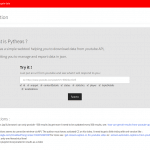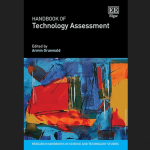Here in the outskirts of Paris, at Champs-sur-Marne, work is ongoing to build the future of Cortext. It will soon be 8 years since the second version of the open-for-all web service, Cortext Manager, has been released. For the next iteration, we’re preparing a more friendly, robust and flexible system, so users can interact in more expressive ways with a richer selection of methods curated and assembled by Cortext.
These changes include new scopes, with:
- Automated data acquisition from many major bibligraphic and documental sources such as OpenAlex, and later niche sources that are precious to our communities
- For ad-hoc lists of publications without standardized identifiers, retrieve their bibliographic records based on titles, authors and date information, to enrich the corpus with their full metadata
- Request complex corpora based on programmatic generation of queries from non-trivial combinations of large amounts of terms
But also new and improved methods
- Domain-topic models augmented with constellation drawing and collaborative learning, plus an improved interface for their block and network maps
- Domain network maps including element-level nodes, their interconnections, and their connections to block nodes
- Visualisation of geospatial networks, with specialized clusters
As well as a more powerful interface and underlying architecture:
- Our web interface, but better, with easier acces to the documentation, to important information on the operations performed, and to the chain of operations leading to a result
- Ability for users with heavy loads to provide extra computing power, as methods get executed in better controlled environments
- Use and study Cortext methods as independent software libraries, entirely free-and-open-source software (FLOSS), for technically proficient users wanting to get creative with our methods
- Download projects as reproductible packages, so your research is future proof and can be independently archived, studied, audited, and replayed years from now
Some of this work is already available to our users, such as improved acccess to documentation and constellation drawing with domaitopic models! Some of it will come soon, and some will depend on ongoing work and new collaborations being established. Last year we secured a first wave of funding from IFRIS and RISIS2 that, together with work quietly carried out over the last years, guarantees reaching at least half of our goals.
But Cortext is also evolving at an organisational level, and we’d appreciate if institutions, researchers and other users benefiting from Cortext services get in touch so we can discuss how everyone can contribute to keep the platform sustainable and moving forward at a steady pace.
Wishing you all the best of things,
The Cortext team








